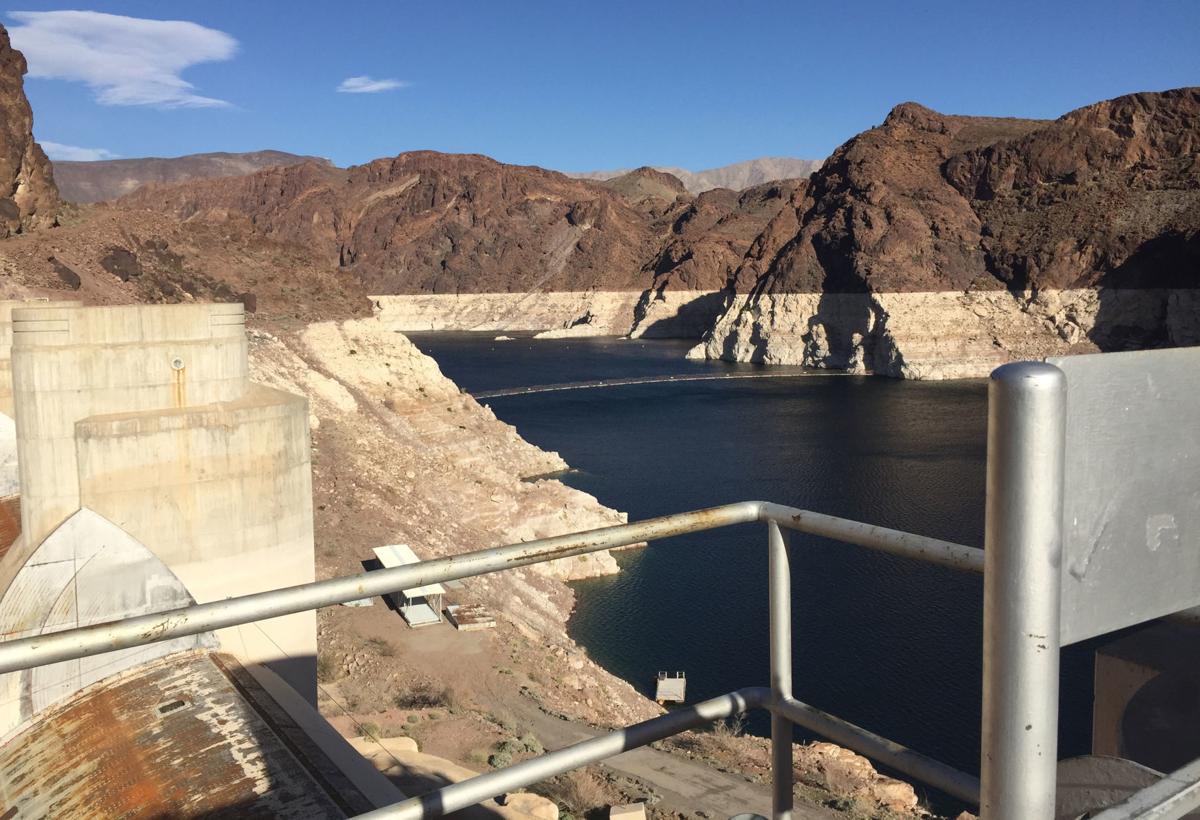Arizona and the six other Colorado River Basin states took a big step toward completion of a drought plan by asking Congress to approve it.
The request is an acknowledgment by the states and the U.S. Bureau of Reclamation that they’ve now finished work on the plan to conserve Colorado River water to keep Lakes Mead and Powell from dropping to critically low levels.
The seven basin states’ representatives signed the letter to Congress at a ceremony Tuesday in Phoenix.
At a media teleconference held afterward, officials expressed hope for relatively speedy approval, and noted that both the U.S. House and the Senate are scheduled to hold hearings on the drought plan next week.
But the plan leaves behind a key player — Southern California’s Imperial Irrigation District, which controls by far the largest share of river water in the basin.
The district declined last week to sign onto the plan because of the federal government’s unwillingness to finance a $200 million fix-up effort for the Salton Sea. The internationally known, man-made lake is in the Southern California desert near El Centro west of Yuma.
It’s been slowly shrinking over the past decade, triggering major bird and fish declines and potential human health impacts due to the release of dust.
Congressional approval of the drought plan will kick in a series of gradually escalating reductions in river water use by the Lower Colorado Basin, first mostly by Arizona but eventually by California with lesser reductions incurred by Nevada.
The most serious reductions may well be forestalled for a year if not longer because of unusually heavy snows falling upon the colder Upper Basin states in February and early March.
Because of the snowpack those storms left behind, the Bureau of Reclamation dramatically raised its forecast for expected Lake Mead levels in 2020 to the point where a major shortage is no longer likely then.
Through Tuesday, snowpack in the Upper Basin was 136 percent of normal.
The predicted April-July runoff into Lake Powell, a key benchmark of the river’s health, is now at 133 percent of normal, which would be the 14th highest total on record.
By contrast, last year’s April-July runoff was 36 percent of normal, the fifth lowest on record.
But since this year would get only the river’s sixth year of above-average runoff since the drought started in 2000, state officials at Tuesday’s teleconference stressed the need for continued vigilance and conservation of river water.
“What we do know is that as temperatures increase, that should reduce the river flows” from evaporation, said Terry Fulp, director of the bureau’s Lower Colorado Region. “If we look at this particular drought, we believe that is due in part to increased temperatures.
“The real question is what about the future? The drought plan is a really good step toward insuring, ourselves, that the two reservoirs don’t reach critical elevations.”
Reclamation Commissioner Brenda Burman said she’s pleased to see that the seven basin states’ work is finished for now.
She said she’s halting work on her previous plan to take written suggestions from the seven states on how to manage the river because of their then-unfinished business on the drought contingency plan, or DCP.
“This is the best path forward,” Burman said. “The DCP will reduce the risks that the Colorado River Basin is facing.”
Even if Lake Mead doesn’t fall into the shortage trigger level of below 1,075 feet at the end of 2019, the new drought plan once approved will require Arizona to reduce its take of Central Arizona Project water from the Colorado by 192,000 acre-feet. That’s well below one-third of the entire CAP’s annual delivery.
Once Mead drops below 1,075, the cuts will gradually escalate, starting at about 20 percent of the total CAP supply and topping off at nearly half the total supply, at about 700,000 acre-feet.
The Imperial district’s participation in the drought plan wasn’t needed for its approval by the seven states. That’s because Southern California’s Metropolitan Water District recently agreed to conserve the water that Imperial decided not to leave in Lake Mead, thus boosting California’s total share of conserved water to the minimum required.
Imperial District officials said the $200 million in federal funds requested for the Salton Sea would match more than $200 million of state funds already approved. They said it would not only help boost the sea’s shrinking habitat for birds and fish, but prevent toxic dust from the drying sea from hurting surrounding air quality and causing human health problems.
“That money is not for us. It’s that Salton Sea in our backyard,” said Robert Schettler, an irrigation district spokesman, in a telephone interview. “We have citizens, lands and crops around the Salton Sea that are all suffering from the sea’s declines.”
Burman acknowledged the district’s concerns and said the federal government supports the Salton Sea restoration effort.
But the U.S. Department of Agriculture, which controls the funding for such drought-related agricultural projects, is only now ramping the program up after Congress last year authorized such projects, and it’s impossible to say when the money will be forthcoming, officials said.





